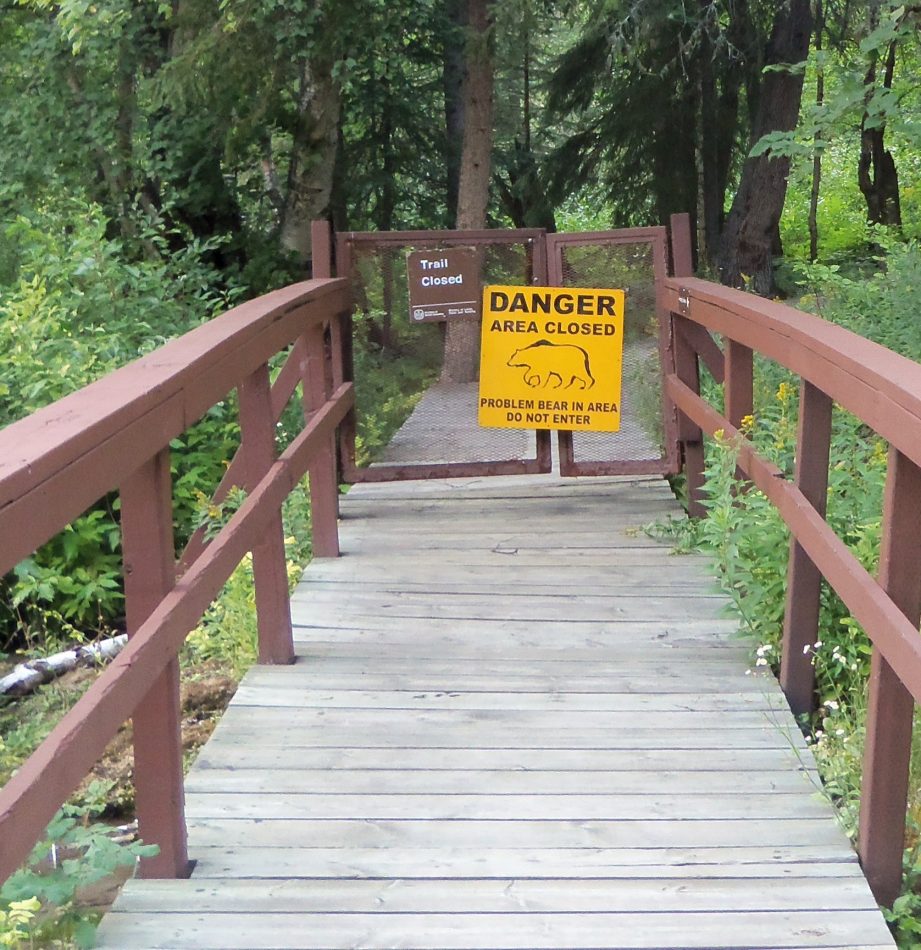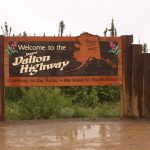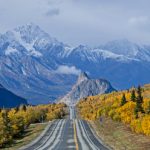At 1,400 miles long, the Alaska Highway, also known as the ALCAN, traverses some of the most inhospitable and least-populated parts of Canada and the United States. It remains one of the great North American roads. A trip up the Alaska Highway is a bucket list item for many people who enjoy a road trip and an adventure.
There are dozens of amazing places to stop along the Alaska Highway, but one of those places is unlike any other: Liard River Hot Springs. Now part of a Provincial Park, Liard River Hot Springs is a series of natural hot springs. Located in northern British Columbia, the Liard River Hot Springs are a chance for weary travelers to get off of the long road and soak in naturally-heated pools. Although much along the Alaska Highway closes in winter, Liard River Hot Springs remains open all year long, from the warmest summer days to the coldest winter nights.
The first known record of the Liard River Hot Springs comes from 1898. In 1898, the first explorers arrived in the area and noted the springs. In the mid-1920s, a pilot doing reconnaissance for mineral exploration in the area stopped at the springs. Upon his return to civilization, his stories of the hot springs included information—false information, it turned out—that the area was home to not only monkeys and parrots, but even dinosaurs. His stories did have one lasting effect, though: they made the hot springs known to the rest of the world.
During the construction of the Alaska Highway during World War II, soldiers working on the portion of the road near the hot springs used them as a natural bath; they were also the first to build paths and boardwalks to the hot springs. As soon as the Alaska Highway opened to tourist travel in 1948, it became one of the biggest draws along the highway. Today, tens of thousands of visitors stop for a warm soak every year.
While not palm trees, the plants in the hot springs and surrounding pools are typically found only in warmer parts of Canada. Many have described a hot spring as an ecosystem within an ecosystem. Liard River Hot Springs is no exception to this statement.
A study of the vegetation near the hot springs found 82 species of plants growing near them. Of these 82 species, 43 were temperate species not normally found in the area. For many of these 43 plants, this is as far north as they have ever been discovered. Multiple species of carnivorous plants also call the hot springs home.
The hot springs also attract a large number of animals thanks to their warmth and open water throughout the year. On the smaller side, tiny lake chub call the hot springs home; these small fish are uniquely able to withstand the warm water and chemical content of the hot springs.
The hot springs are also home to many moose, who placidly graze along the boardwalk leading to the hot springs. There is evidence of a snail that exists only in the vicinity of the hot springs. However, a lack of study means no one knows for sure whether the snail exists. Years ago, pranksters let a snapping turtle loose in the swamps around the pools, despite it being well north of its normal habitat. Thanks to the warm water of the pools, though, the snapping turtle survived for years. The turtle both evaded capture by park rangers and provided a unique wildlife viewing experience for this part of Canada.
Visitor Information
The campground at the Liard River Hot Springs Provincial Park regularly fills up during the summer season. Even if the campground is full, the hot springs will remain open to park visitors who are not camping. Accessing the springs requires a short hike. Additionally, bear activity has regularly closed portions of the hot springs in recent years. Take all bear warnings seriously. Approximately 20 years ago, a bear killed two people visiting the hot springs. Please keep all wildlife at a distance and obey any warnings regarding wildlife. Also, while the park provides changing facilities, visitors must bring their own swimming gear and towels to the hot springs.







Very good article Sarah and Choppy. We enjoyed it a lot along with seeing your two photos. We would love to make this an adventurous road trip someday. Thanks for the info.
M&G
NYC
I visited the Liard River Hot Springs Park twice in the summer of 1961 while on a 5-1/2 week, 10,5000 mile motor trip with 2 Boy Scout adult leader team driving and 6 Boy Scouts ages 13 to 16 years of age. We travelled in a brand new International Travel All crew cab vehicle that the Scout Master purchased and planned this trip of a life time. We slept in two-person Army pup tents that we sewed in a canvas floor with dental floss every night in a state / national park / level piece of land along the road every night and made eggs/ bacon/ oat meal breakfasts and cooked a dinner at night. lunch was ham sandwiches, fruit and cool aide drinks. Some of the young scouts learned to drink coffee in the morning and afternoon like our scout masters did to keep sharp driving and following the route maps.
The Hot Springs was are favorite place to relax and enjoy the hot springs water pools and the lush vegetation.
We drove to Fairbanks, Mt. McKinley ( now Denali Park), walked on the artic tundra, saw the Northern Lights, read newspapers at 11:00 pm at night and saw moose, sheep, moose and running brown bears.
We drove to Seattle, WA and went the World’s Fair, ate in the Space Needle and enjoyed the Fish Market. Crossed east to Youngstown, OH on RT.66 and many more adventures on this “once in a lifetime” trip that I still talk about and remember even now at 74 years of age